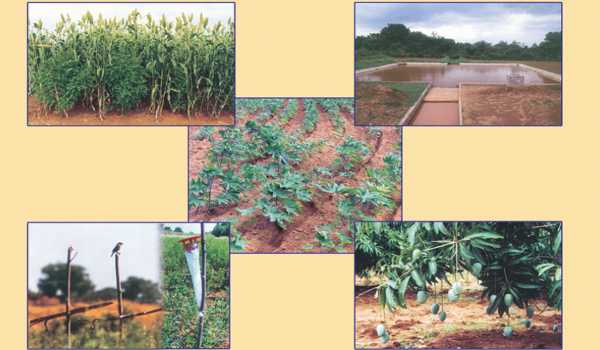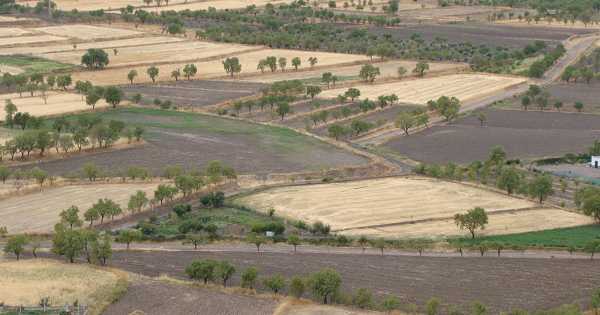Soil health is critical to long-term agricultural productivity and environmental well-being. Soils that are healthy provide a variety of environmental services, such as water infiltration, habitat provision, and profitable and sustainable agriculture. Soil health is pragmatically considered at the agricultural and horticultural enterprise level, with an emphasis on long-term productivity. Soil health management is practiced insofar as it is recognized as critical to sustaining productivity and safe food products.
In collaboration with the Soil Health Institute in North Carolina, the USDA’s Agricultural Research Service’s (ARS) Northern Plains Agricultural Research Laboratory evaluated and refined the measurement of carbon dioxide flush—a quick, reliable, and inexpensive method producers can use to measure soil health on dryland cropping systems—to be closely associated with most soil properties and long-term crop performance.
Farmers, producers, and managers are increasingly interested in using soil health assessments to determine the level of desired soil properties such as aggregation, microbial activity, nutrient cycling, salinity, acidity, and organic matter. In general, producers must use a variety of methods and indicators to assess a wide range of soil properties, and testing can be costly.
Researchers evaluated the measurement of carbon dioxide flush—a rapid, reliable, and inexpensive method producers can use to measure soil health on dryland cropping systems.
Given that this knowledge can aid in the decision-making process for soil management practices for crop production, there is a need for a low-cost, dependable test that can provide appropriate data for measuring soil health, particularly nitrogen mineralization. Nitrogen mineralization refers to the amount of nitrogen that naturally becomes available from the soil during a growing season, and understanding it can help farmers use less nitrogen fertilizer while maintaining crop yields and reducing environmental degradation.
Scientists are focusing their efforts on identifying indicators and parameters for what makes a soil healthy, which can help producers determine if additional practices can help them increase crop production while maintaining sustainable, healthy soil for future generations.
The measurement of carbon dioxide gas released (flushed) after rewetting dry soils is one soil health indicator that scientists have focused on. The method entails adding water to a dry soil sample and incubating it in a jar for one day. Microbial activity in the soil is indicated by the carbon dioxide released inside the jar during incubation. The higher the amount of CO2 flushed, the healthier the soil.
Although the test has been known for a long time and the carbon dioxide flush has been related to crop yields, it has not been related to a large number of soil properties or tied to long-term crop yields.

In the study, ARS research soil scientist Upendra M. Sainju and collaborators used this method on soil samples collected from two long-term experimental sites for dryland farming (14-36-year-old sites in Eastern Montana), with the goal of identifying a promising soil health indicator that relates to most soil properties and crop yields and is reproducible. After a 1-day incubation period with water and a 4-day incubation period with an alkali solution, samples were tested for carbon dioxide flush, which was related to 54 different soil properties and the average crop production across years in dry regions.
“Measuring soil health may be difficult for producers,” Sainju said. “When farming in semiarid conditions, our team was able to refine the 1-day incubation method to relate to the majority of soil physical, chemical, biological, and biochemical properties. When compared to the 4-day method, the 1-day incubation method was not only faster but also more accurate because it is linked to more soil properties and has a better relationship with crop production. The reduced time required for incubation and mixing soil with water without the use of chemicals makes it more practical and cost-effective for producers.”
The scientists hope to continue validating this simple process for short-term experiments with different soils in both dryland and irrigated cropping systems, and to share the results with farmers. “Knowledge is critical to maintaining healthy soils, which has a direct impact on yearly crop harvest, and requires a simple, easier, more reliable, and less expensive test to measure,” Sainju said.
Soil, water, air, and plants are all important natural resources that contribute to the production of food and fiber for humans. They also protect the ecosystems on which all life on Earth is ultimately dependent. Soil is a medium for plant growth, a sink for heat, water, and chemicals, a water filter, and a biological medium for waste breakdown. Soil interacts with water, air, and plants, acting as a damper to environmental fluctuations. Many of the ecological processes that control water and air quality and promote plant growth are mediated by soil.















